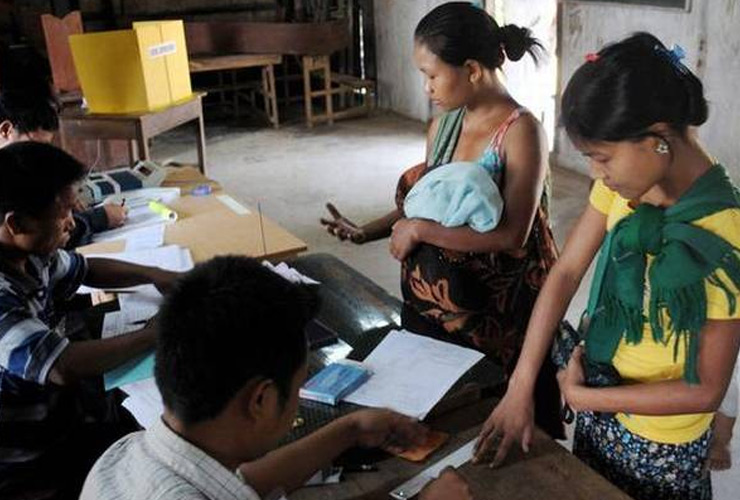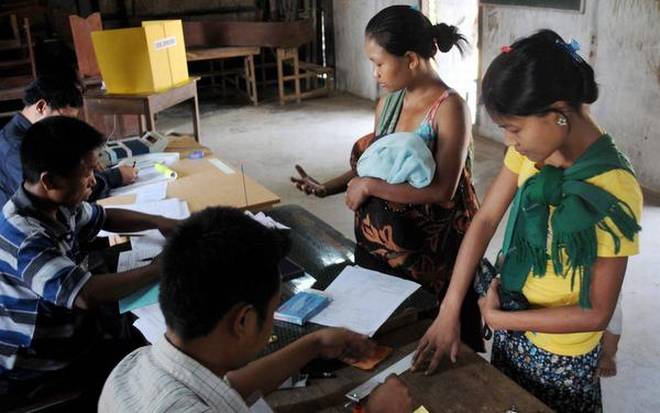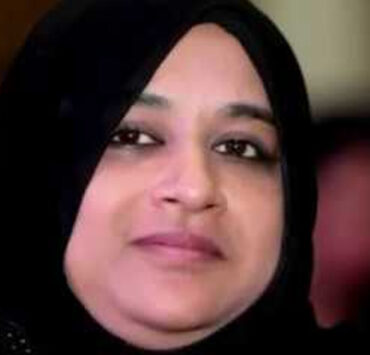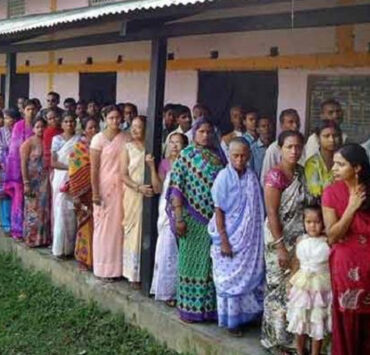
By Kalpana Sharma

Women getting their fingers marked before casting their votes in Aizawl in 2014.
Mizoram has more women voters than men — 51.25% of the total number of voters. Yet, when they cast their votes for the Assembly election on November 28, it is unlikely that the number of women voted to elective office will change dramatically. It was heartening to hear, when candidates filed their nominations in the run up to this election, that for the first time 15 women were standing. Of these, six are candidates for the Bharatiya Janata Party (BJP), which barely has a presence in the state – although it is trying hard this time, but only one from the ruling Congress party. The latter is someone who also won a previous election. Without the backing of a major party, most women have no chance of winning.
In its 46 years as a state, Mizoram has only elected four women to the state assembly. However, its record is much better than neighbouring Nagaland, where not a single woman has been elected to the state assembly after it became a state in 1963, and only one woman has been elected to Parliament: Rano Shaiza in 1977.
However, as the few news reports about the Mizoram elections have revealed, dynastic politics that afflicts the rest of India is also at play in Mizoram when it comes to the choice of women candidates, as this report in The Hindu clarifies. For instance, the only woman fielded by the Congress Party, Vanlalmpuii Chawngthu, is the daughter of a former minister who is currently the general secretary of the Mizoram Pradesh Congress Committee. She has been elected once before and was the first Mizo woman to be a minister in the state government.
Even Zoram Thar, a relatively new political formation that is headed by an evangelist, Rev. Zaichhawna Hilawndo, and is contesting 24 seats, is bitten by the same bug. It has fielded five women candidates, all of whom are “family”. Two of the five are Rev. Hilawndo’s daughters, while the other three are his neighbours.
Rev Hilawndo told the reporter of The Hindu, apparently without any sense of irony, “Ours is a new group guided by divinity to clean up the corrupt political system and establish God’s government.”
The participation of women in electoral politics in some of the northeastern states like Nagaland and Mizoram poses interesting insights into their society. If you travel through these states, you see women everywhere — in the paddy fields, minding shops, selling fresh produce on the roadside, weaving, cooking, cleaning.
Yet, in local politics, women are invisible. There are no prominent women in the existing regional parties, or the national parties that have a presence in these states. Although there are prominent and outspoken women in many other sectors, so far, they are not to be seen in electoral politics.
This is such an obvious story for anyone covering the elections in Mizoram. But it has not caught the attention of any reporters barring this one that appeared in The Hindu today:
https://www.thehindu.com/elections/mizoram-assembly-elections-2018/mizoram-assembly-elections-2018-little-room-for-women/article25591748.ece




